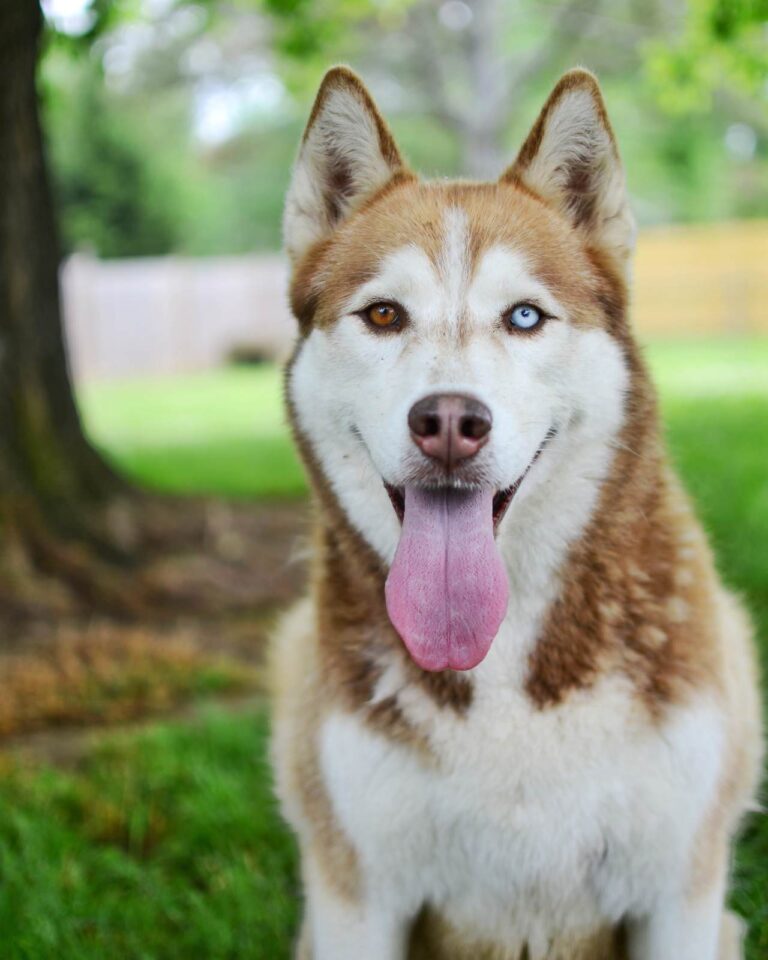Canine Acanthomatous Ameloblastoma (CAA)
CAA is a tumor that we commonly encounter in our canine patients. This tumor was previously known as an “acanthomatous epulis“, with “epulis” being an outdated and non-specific term simply meaning “growth on the gingiva (gums).” Recent in-depth studies of gingival masses have provided more accurate definitions of “epulis” tumors such as CAA. A pathologist well-versed in oral masses will provide the best chance at giving the correct diagnosis and guiding the proper treatment.
Quick Facts About CAA
- Starts as a visible growth on the gums (gingival mass) that tends to proliferate around a tooth or teeth
- Often has an irregular and very red/angry appearance (not always!)
- Commonly found in the front part of the lower jaw (rostral mandible), but can occur in any location of the mouth
- Occurs in all breeds, but goldens, shelties, and cockers are predisposed
- Most commonly seen in dogs between the ages of 6-10
- No reported metastasis (spread to other parts of the body)
- Frequently affects the underlying bone in addition to the gingiva
- CT scan is recommended prior to surgery to fully evaluate the extent of bone involvement
- Preferred method of treatment is aggressive surgical removal (both visible tumor and underlying bone and teeth)
- Recurrence is unlikely with proper surgical removal
- Radiation is a treatment option for non-surgical tumors (although the side-effects of radiation must be considered)
Because CAA has never been reported to spread to other parts of the body (metastasize), it is often described as “benign” by the practitioner. However, this is a very locally aggressive tumor that requires quick and accurate diagnosis and proper surgical removal. CAA often starts as a small, red, raised growth on the gums which gradually grows until it proliferates around a nearby tooth or teeth. It eventually becomes a large, red mass on the gums. Beneath the visible portion of the mass there is typically a large amount of bone destruction. For this reason, we often refer to the visible portion of the mass as the “tip of the iceberg” because we expect to find the greater part of the mass hidden in the bone below. Early diagnosis is critical to avoid the need for excessive bone removal during surgical treatment of the tumor.
Diagnosis:
Due to the amount of inflammation associated with this tumor, large tissue samples must be taken to enable the pathologist to make a correct diagnosis. X-rays or CT scan are also necessary to expose the extent of the bone invasion of the tumor, with CT scan being the more sensitive and preferred of these two tests. After the extent of the tumor has been determined and a confirmed diagnosis of CAA has been made with biopsy, proper treatment planning can begin.
Treatment:
Surgery is the treatment of choice for CAA. Due to the large amount of underlying bone typically involved, it is necessary to take wide surgical margins to completely remove this tumor. In general, the surgeon will attempt to remove approximately 1 cm of normal tissue/bone adjacent to the tumor to ensure complete removal of all tumor cells. This surgical method results in a very low recurrence rate. Removal of a portion of the jaw is called mandibulectomy (lower jaw) or maxillectomy (upper jaw). Dogs generally tolerate these procedures very well.
For patients with tumors located where surgery is not possible, or when there is a desire to preserve as much function and cosmesis as possible, radiation can be considered. The side-effects of radiation (e.g., issues with the skin and mucosa in the irradiated region) must be considered and discussed with the radiation oncologist prior to electing this treatment option.
Prognosis with no treatment:
CAA tumors do not spread to other parts of the body and typically do not cause general physical difficulties. However, because CAA tumors can grow quite large in the mouth over time, the sequelae that can be anticipated include facial swelling, oral bleeding, difficulty eating and subsequent weight loss, excessive drooling, and oral pain. Without treatment, this type of tumor will continue to grow and inevitably become life-threatening for the above reasons.
Conclusion:
CAA, although very locally infiltrative, does not spread to other parts of the body and is therefore a very treatable tumor. Additionally, it is often found in regions of the jaw where full surgical removal is both possible and likely to produce little impact on long-term function or cosmesis. With CAA, it is important to remember that quick diagnosis and treatment provide the best opportunity to preserve as much bone as possible and ensure full removal without the possibility of regrowth.
References:
Mayer MN, Anthony JM. Radiation therapy for oral tumors: canine acanthomatous ameloblastoma. Can Vet J. 2007 Jan;48(1):99-101. PMID: 17310630; PMCID: PMC1716740.
Goldschmidt SL, Bell CM, Hetzel S, Soukup J. Clinical Characterization of Canine Acanthomatous Ameloblastoma (CAA) in 263 dogs and the Influence of Postsurgical Histopathological Margin on Local Recurrence. J Vet Dent. 2017 Dec;34(4):241-247. doi: 10.1177/0898756417734312. Epub 2017 Oct 4. PMID: 28978273.
Liptak, J.M. Cancer of the Gastrointestinal tract. In: Withrow and MacEwen’s Small Animal Clinical Oncology, 6th Edition; 2019.







